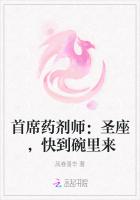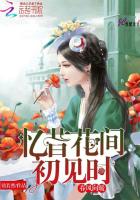Zheng He was a pious Muslim and Buddhist. Hewas so versatile that he even knew the art of Buddhistarchitecture. On one hand, Zheng He introducedtraditional Chinese architecture into Southeast Asia,helping Siam build the Pagoda of Three Treasures, theTemple for Rituals, the West Tower and Ximen; He alsostudied the local art of Buddhist architecture and visitedAngkor Wat in Kmir to prepare for the construction ofthe Grand Bao,en Temple in Nanjing. And the NanjingGrand Bao,en Temple, which Zheng He built after hisreturn, was indeed a spectacle with proper application ofthe cultural elements typical of Southeast Asian Buddhistarchitecture. Widely acknowledged by visitors both athome and abroad, it has been listed among the world,s
中国与伊斯兰世界的航海家。
郑和既是一位虔诚的穆斯林,也是位虔诚的佛教徒。他具有多方面的才能,深谙佛教建筑艺术。他一方面把中国的建筑艺术传到东南亚,帮助暹罗建造三宝寺塔、礼拜寺、西塔和锡门,一方面研习东南亚的佛教建筑艺术,考察真腊的吴哥古寺,为在南京建造大报恩寺塔准备条件。由郑和建造的南京大报恩寺塔,吸收了东南亚佛教建筑文化元素,雄伟壮观,受到中外人士普遍赞扬,认为是可与意大利罗马大斗兽
seven great mediaeval wonders that also include theRoman Coliseum of Italy, the Leaning Tower of Pisa, Italyand the underground vault of Alexandria, Egypt. ZhengHe moved two Buddhist tile pagodas from Southeast Asiato somewhere in front of the Xuefeng Temple (also calledChongsheng Temple), located at the southern foot of thePhoenix Mountain in Minhou County, Fujian Province.Today, the sites are still there despite the fall of thepagodas. Zheng He made great efforts to boost the spreadof Buddhist culture between China and Southeast Asia.
Zheng He also carried back Buddhist paintings withalien features. The portrait of an amphibious arhat hungin the Jinghai Temple, Nanjing, was a piece of premiumartwork Zheng He brought back for public display. YuChan of the Ming Dynasty said “the portrait of the arhatincorporates superb workmanship excelling nature” and“everybody, old or young, men and women, rush to havea look.”
Some Asian and African countries Zheng visitedboasted wonderful carving art. The places where the kingslived were decorated with exquisitely-carved hardwoodpatterns of flowers and beasts. The stone carvings inAngkor Wat, which is part of the world,s artistic treasures,include bas-reliefs, high reliefs and full reliefs. Thecarvings inside the cloisters of Angkor Wat are bas reliefsthat describe mythical stories and scenes from daily life.
场、意大利比萨斜塔和埃及亚历山大地下陵墓等相媲美的中世纪世界七大奇观之一。郑和还把东南亚的两座佛教瓦塔,移置福建闽侯县凤凰山南麓的雪峰寺 (又名崇圣寺) 前。如今塔已早废,遗址尚在。郑和为中国与东南亚的佛教文化交流作出了努力。
郑和注意亚非国家富有民族特色的佛教绘画,热心介绍到中国来。南京静海寺张挂的水陆罗汉像,便是郑和从西洋带回来公开让百姓参观的海外绘画精品。明人俞产赞道:“阿罗汉像,水陆毕陈,巧夺造化之奇”,“都人士女,竞相观之”。
郑和所访问的有些亚非国家的雕刻艺术相当精美。榜葛剌等国国王的住所,都用硬木雕刻花鸟兽状,极其精巧。吴哥古迹的石雕艺术,属世界珍品,分浅浮雕、深浮雕和圆雕三大类。吴哥寺回廊上用来表
Those decorated on ceilings and stone columns are deepreliefs of flowers, trees, birds and beasts. Most carvingsof Buddha are full reliefs. With smooth lines and vividshapes, the carvings were introduced by Zheng,s teamto China. It was recorded that the lively patterns of lions,dragons, fish, shrimps and sea beasts carved on the whitestone “Flying-Rainbow Bridge” that was once locatedbehind the Guangzhi Palace (the southern exit of todays,Nanchizi, in the eastern part of the Golden River in frontof Tian,anmen Square, Beijing), west of Huangshicheng(the royal archives of the Ming Dynasty), in the MingDynasty were brought back by Zheng He from overseas.In addition, a Buddhist monk named “Fei Huan” whowent along with Zheng He in his voyage carried backa statue of arhat carved out of eaglewood, which had apositive influence upon Chinese Buddhist art.
Zheng,s voyages to the Western Oceans also pushedforward the spread of Mazu culture, a branch of ChineseTaoism. Mazu (also called the Queen of Heaven) was thegoddess of navigation and respected by the people inChina,s southeastern coastal areas. Many of the 20,000sailors in Zheng,s fleet adored Mazu. As the leader of thefleet, Zheng He naturally turned to supernatural powersfor blessings and regarded it as mental support for thewhole crew. Zheng He was so pious that every time he setoff he would pray to Mazu for safety and when he came
现众多人物的神话故事及生活场景,属于浅浮雕;天花板和石柱上装饰的花木鸟兽等图案,属于深浮雕;其中诸多佛像的雕刻,多属圆雕。这些雕刻,线条流畅,栩栩如生,立体感强。郑和使团把它吸收过来,传入中国。据载,明代北京皇史宬(专藏皇帝手笔、实录、秘典的藏书处)以西正中广智殿后(今北京天安门金水河东段南池子南口)曾有一座飞虹桥,用白石砌成,石上雕刻有狮、龙、鱼、虾、海兽,水波汹涌,活泼如生。这些石雕就是郑和从西洋带回国内的。另外,一位随郑和出使的非幻禅师从西洋带回的
back he would thank her for her blessings. Zheng He hadMazu palaces and Tianfei temples built in many placeslike Nanjing, Taicang, Changle and Meizhouyu, and hadthe temples repaired more than once. He also establishedtablets on which the merits of Mazu were recorded. Theinscriptions, carved on the “Tablet on the Magic Power
一堂罗汉像,系用沉香木雕刻而成,“像最奇古,香更异常”,对中国佛教艺术产生了积极影响。
郑和下西洋促进了属于中国道教门类的妈祖文化向域外的传播。随郑和下西洋的2万多名船员中,不少人崇拜妈祖。作为船队的统帅,郑和顺其自然,把航海平安的希望投向超自然力的神力,将妈祖奉为全体航海人员精神上的寄托。郑和对妈祖的崇拜十分虔诚,祭礼活动极为频繁。每次出发下西洋前,均隆重祭拜妈祖,以
of Tianfei” that was launched by Zheng He in ChangleCounty, Fujian, were all about the gratitude he showed tothe goddess.
The Mazu worship that began from the early SongDynasty in the coastal areas of Fujian developed throughZheng,s voyage to the Western Oceans. As more and moreChinese people moved to Southeast Asia (“Xia Nan Yang”in Chinese), the worship spread to Southeast Asia andfurther to European and American countries. Nowadays,there are about 2,500 Mazu temples throughout the world,with over 100 million Mazu followers. Mazu culturehas developed into a Chinese folk culture that is widelyembraced by the offspring of Yandi and Huangdi.
Institutional cultural exchange















